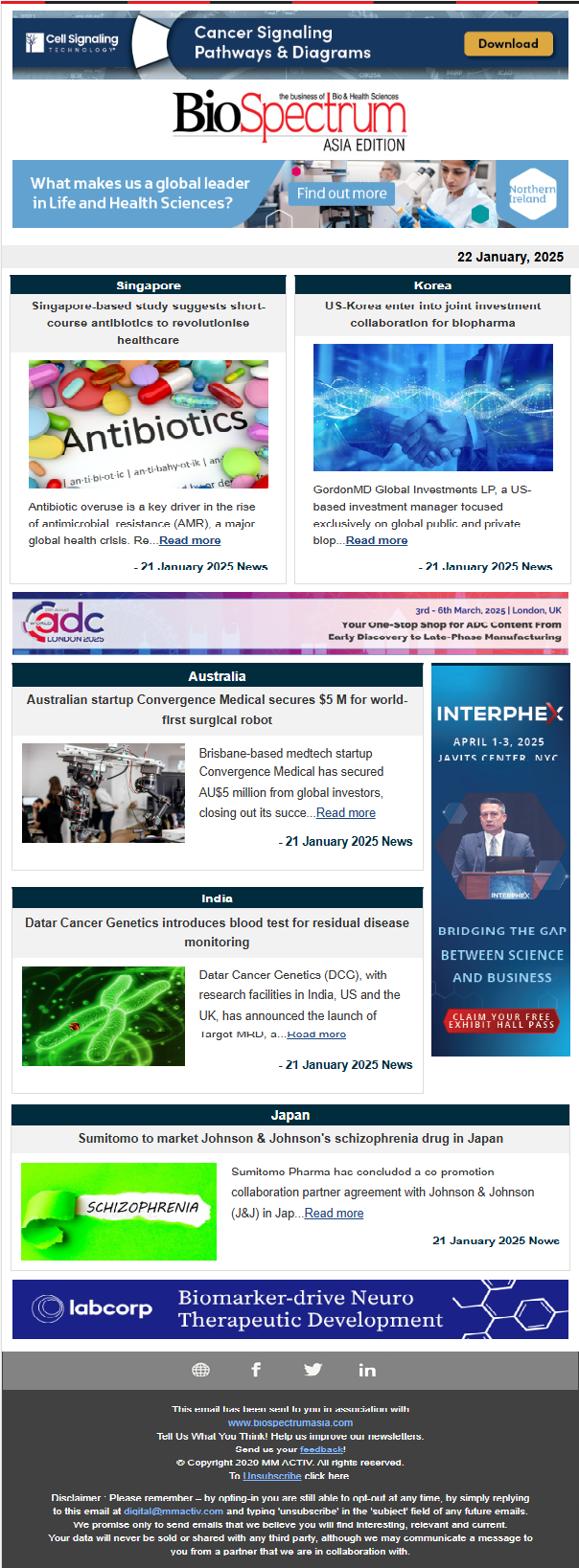
Patients with non-proliferative diabetic retinopathy (NPDR) currently face a therapeutic gap—one that often leaves them untreated until their condition worsens and requires invasive procedures. Vantage Biosciences, supported by ALSA Ventures, is working to close that gap with VX-01, an investigational oral drug that targets AOC-3, a key driver of neurovascular inflammation. In this interview with BioSpectrum Asia, Alek Safarian, CEO of ALSA Ventures, shares how VX-01 could become the first oral, disease-modifying treatment for NPDR, offering earlier, safer intervention to preserve vision and alter the progression of diabetic eye disease.
“We believe that cascade of inflammation is what drives much of the damage we see in early diabetic retinopathy.By targeting AOC-3, VX-01 is addressing the root cause of the pathology, rather than the complications arising from it. That’s what differentiates it from other treatments in this space.”
Alek Safarian ,CEO of ALSA Ventures and Chairman of portfolio company Vantage Biosciences.
What makes VX-01 a potential game-changer for NPDR?
VX-01 addresses an area of significant unmet need in diabetic retinopathy. There are currently no approved oral treatments available for these patients. As a result, most patients with early-stage disease go untreated until their condition progresses, typically to a point where invasive interventions like anti-VEGF ocular injections, are required.
VX-01 is different because it represents a convenient route of administration, and importantly aims to tackle disease at an early stage, so that patients can maintain adequate vision without needing invasive treatment. As such, the aim is to target the biological cause that gives rise to later stage complications and avoid getting there in the first place. Mechanistically, VX-01 is a potent inhibitor of AOC-3, a dual-function enzyme that drives both oxidative stress and inflammation in the retina, that are thought to be key drivers of disease onset.
VX-01 has demonstrated an impressive safety profile, supported by data from over 400 participants across a number of related conditions, including diabetic kidney disease.
What are the key goals of the Phase 2 study?
The primary objective is to demonstrate that VX-01 can prevent meaningful disease progression in patients with moderate to severe NPDR - those who are at a substantially increased risk of moving into proliferative disease, which can lead to permanent vision loss.
We’re looking for a three-step worsening on the binocular Diabetic Retinopathy Severity Scale over the course of 52 weeks. This would not only be clinically meaningful in Phase II, but also an approvable endpoint in phase III.
The trial is being conducted across reputable sites in the United States, Australia and several Southeast Asian countries, with enrolment focus being on patients most at risk of progression.
Why target neurovascular inflammation in diabetic eye disease?
It’s been known for some time now that diabetic retinopathy is more than just a vascular disease. It’s an inflammatory, neurovascular complication of diabetes, and that is a critical distinction. In fact, the earliest detectable changes often involve the breakdown of the neurovascular unit before overt vascular damage occurs.
AOC-3 is a compelling target in this context. It’s upregulated in the diabetic retina and plays a key role in both the oxidative stress response and in facilitating the migration of leukocytes into retinal tissue. We believe that cascade of inflammation is what drives much of the damage we see in early diabetic retinopathy.
By targeting AOC-3, VX-01 is addressing the root cause of the pathology, rather than the complications arising from it. That’s what differentiates it from other treatments in this space.
Why run the trial across the United States, Australia and Southeast Asia?
This is a global disease, with significant prevalence rates across all regions. Key considerations in selecting geography involved regulatory alignment, availability of high-quality medical research infrastructure, and ability to enrol patients within our planned timelines. After a thorough feasibility exercise looking into these variables, we believe the mix of countries selected for this study are best placed to achieve these goals.
How does ALSA Ventures support Vantage Biosciences’ growth?
One of our aims at ALSA Ventures is to build and support clinical stage companies, not only financially but also through leveraging the operational capability and prior industry experience of the ALSA team. Vantage Biosciences is a good example of this approach. The company was created around VX-01, with the ALSA Ventures team taking on key management responsibilities in the runup to clinical study commencement. This involved close oversight of manufacturing and working with CDMOs, as well as working with advisors on clinical trial design and formulating regulatory strategy. Along the way, ALSA also helped put together operations teams for Vantage ranging from CMC support to Clinical Operations resourcing, setting up QA/QC infrastructure, as well as commercial assessment, CRO selection and general back-office support.
This hybrid combination of the venture team working closely with operations personnel, has allowed Vantage to move through the gears very quickly by maintaining a flat structure where decisions can be made quickly, but still involve all relevant stakeholders.
What is next for VX-01 if the Phase 2 results are positive?
If the Phase 2 results are positive, next step would be to plan registration studies, and engage with strategic partners to lay the groundwork for international regulatory submissions and commercialisation planning.
We’ve also been doing some early planning around product lifecycle management involving further CMC development, as well as possible investigation of AOC-3 in a number of disease indications, including outside of ophthalmology. Ultimately, pending the current study, VX-01 has the potential to become the first oral, disease-modifying treatment for diabetic eye disease. Whilst that’s a very exciting prospect in itself, it would also validate AOC-3 as a clinical target, and may spur further clinical development in related indications where it known to play an inflammatory role.




